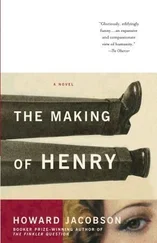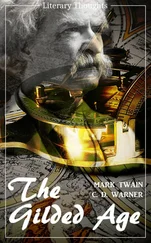“I love Ken,” said Paula, an upbeat, notably practical-minded daughter of Holocaust survivors who first met her husband when they were growing up in the refugee community in Brooklyn. “We have always been together. Childhood sweethearts. Ken is a very wonderful and talented man, a good husband, a good father, a good son, a great artist. Our daughter has three children. He is a wonderful grandfather. It is just on this one thing— this thing! —that he acts crazy. Nuts!
“I understand why he’s done what he’s done. But this has been difficult for me. I am a businesswoman. Before that protest about the Holocaust museum, I had a shoe business, a high-end shoe company. I had a lot of Jewish customers. After the protest, they wouldn’t buy from me anymore. They said, Paula, we love you, but why did Ken have to do that? I had to close up. Then for years he was in the library. He was spending more time with Ilse Koch than he was with us! It is like an addiction. I made him promise that after the movie he’d stop being involved with this. To let it go! I was very serious. Maybe he heard me, for once.”
As for her concern that her husband would be inspired to start up a new search after learning of the Katrina lampshade, Paula Kipperman did not have to worry.
Kipperman and I spent several hours together, during which time he described, as if by rote, the various aspects of his research, showing me the pictures of him with the shrunken heads, enumerating every step of his dogged search for the lampshade Major Schmuhl took from the Buchenwald Table. As for the New Orleans lampshade, Kipperman listened to me tell my story, about Hurricane Katrina, and how Skip Henderson bought the thing from Dave Dominici, and how Shiya Ribowsky examined it and sent the samples to Bob Bever at Bode, and how the results came back positive, and how the Holocaust Museum said it was a myth. I was getting good at the story by then, having told it so many times.
Kipperman listened, looked at the pictures of the lampshade I had on my computer, glanced at the DNA report. He did all this with polite interest because Kipperman is nothing if not polite. He thanked me for bringing all this to his attention but asked few questions, expressed little wonderment.
Ken Kipperman knew what he was looking for, and this wasn’t it.

SEVEN

If Ken Kipperman was frustrated by his inability to raise awareness about the fate of the Nazi human skin artifacts, there was at least one person who shared his fixation with the Buchenwald Table. This was Denier Bud, as in Holocaust Denier Bud.
I first became aware of Denier Bud, who also calls himself Mike Smith and lives somewhere in the San Francisco Bay Area, when I saw one of his web videos, Nazi Shrunken Heads . It sounded like one of those movies I used to see at the bottom half of Forty-second Street double bills, but it kept coming up on the search engine, so I clicked and there it was, the same footage of the Weimar people trudging up the Blood Road. That this was going to be a radically different take on the material was announced by Denier Bud’s voice-over, the same lugubrious timbre that accompanies all his work.
“At the Buchenwald concentration camp in 1945, the Americans set up a display table to show Nazi atrocities,” Denier Bud began miasmically as the camera panned over the familiar objects: “A lot of bogus items, tattooed skin supposedly taken off bodies, a supposedly human skin lampshade, which in reality is just a basic lampshade, but they really went over the edge of dumb when they put this on the table.”
Pausing on a close shot of the shrunken heads, Denier Bud said that “they are being used to frame the Nazis as head-shrinkers. It’s just so dumb .”
Nazi Shrunken Heads then moved to the Nuremberg trials, where prosecutor Thomas Dodd, dramatically whisking the sheet off one of the heads, delivered his line: “The Nazis had one of their many victims decapitated, after having had him hanged, apparently for fraternizing with a German woman, and fashioned this terrible ornament from his head.” This struck Denier Bud as really dumb . [15] For the curious, Denier Bud’s work can be found in many web locales. Since these addresses tend to change from time to time, the entry of “holocaust denial videos” or “denier videos” into Google is a fairly reliable pathway. Presently Buchenwald: A Dumb Dumb Portrayal of Evil can be found at http://www.holocaustdenialvideos.com/buchenwald . For Nazi Shrunken Heads , see http://www.holocaustdenialvideos.com/nazishrunkenheads .
In fact, it was evidence like this, Denier Bud said, that “might make you begin to understand why Holocaust deniers are Holocaust deniers.”
It was through the use of “illusionary symbols” like shrunken heads and lampshades that events like the Holocaust are manipulated by the ruling class to further the unending militarism that inevitably benefits the rich and powerful, Denier Bud went on. The catalyst for these machinations, he said, is the unlimited capacity for human beings “to believe in evil.” In the United States such gullibility “is related to TV, movies, and the Christian religion.”
With a split-screen video image displaying a Bible on one side and a TV set on the other, Denier Bud explained, “Christianity, with its infantile concept of good and evil, and TV and movies, with their infantile characterization of good and evil, serve as the basis for most story lines. Add a dose of testosterone and you have gullible American men easily influenced to be pro-war. All the media has to do is portray someone as evil .”
From there, as an example of how these “managed delusions” work, Denier Bud edited in a clip from the 1961 film Judgment at Nuremberg . Richard Widmark, in the Thomas Dodd role, is standing in front of the courtroom, showing the actual Buchenwald Table footage to the judges. As the camera moves over the Table, Widmark portentously ticks off the catalog of horrors: “A lampshade made from human skin; skin being used for paintings, many having an obscene nature; the heads of two Polish laborers, shrunken to one-fifth their normal size; a human pelvis, used as an ashtray.”
Denier Bud stops the footage right there to say, “Let’s compare dumb-dumb portrayals of evil which justify war.”
He replayed Widmark intoning “A lampshade made from human skin,” and then cut to a tape of George H. W. Bush giving a speech prior to the U.S. Senate vote on whether to attack Saddam Hussein in retaliation for his invasion of Kuwait in the Gulf War. “They had kids in incubators! ” blurts the elder Bush in his spazzy, frat-party way. “And they were thrown out of the incubators! So that Kuwait could be systematically dismantled.”
Watching this recalled a comment made by the late Raul Hilberg, author of The Destruction of the European Jews and the most magisterial of Holocaust scholars. Asked why he spent time monitoring the spoutings of Holocaust deniers, Hilberg said, “You never know, there’s always the chance they might say something interesting.” I wasn’t sure if Denier Bud’s work fit this criterion, but his rinky-dink DIY PowerPoint videos and comic-book-nerd sensibility was a definite switch from the usual White Power rant.
A friendly if secretive sort, Denier Bud was “totally amped up” that a New York Jew, a member of the ever-suspect mainstream media, was interested in his videos. I was “just the kind of person” he felt he should be talking to because conversations with other Holocaust “revisionists” could get “kind of boring because some of these guys haven’t had a new idea in decades.” His web handle aside, Bud did not consider himself a “denier” in the strict sense but rather a “maker of Holocaust denial art.”
Читать дальше













